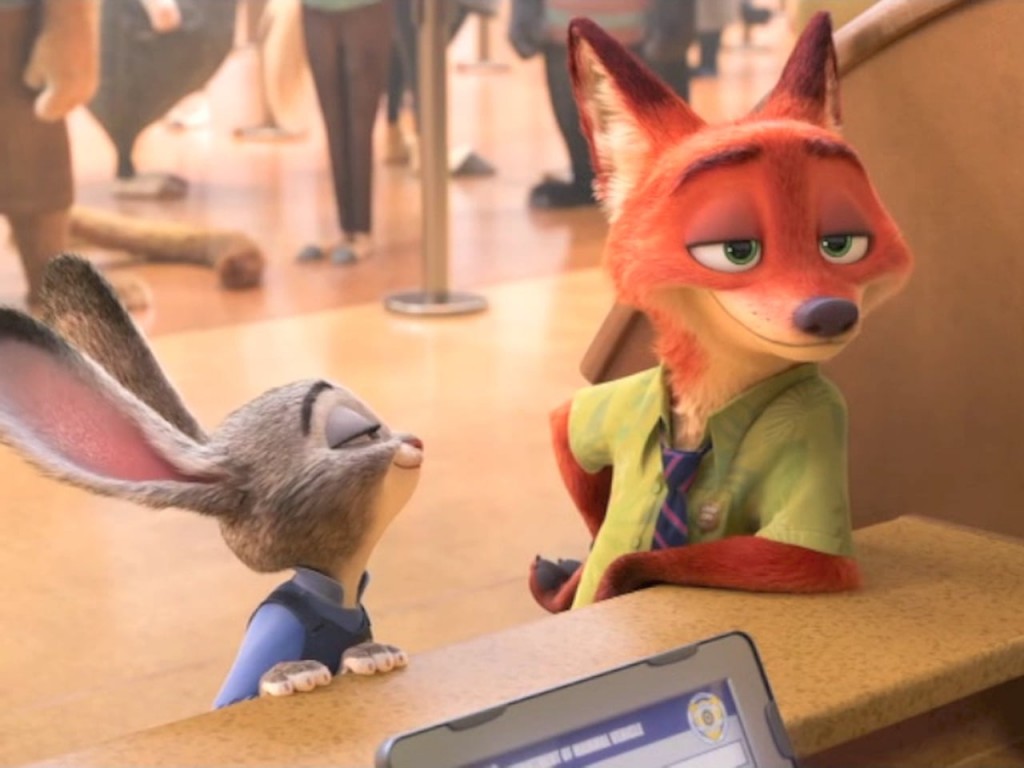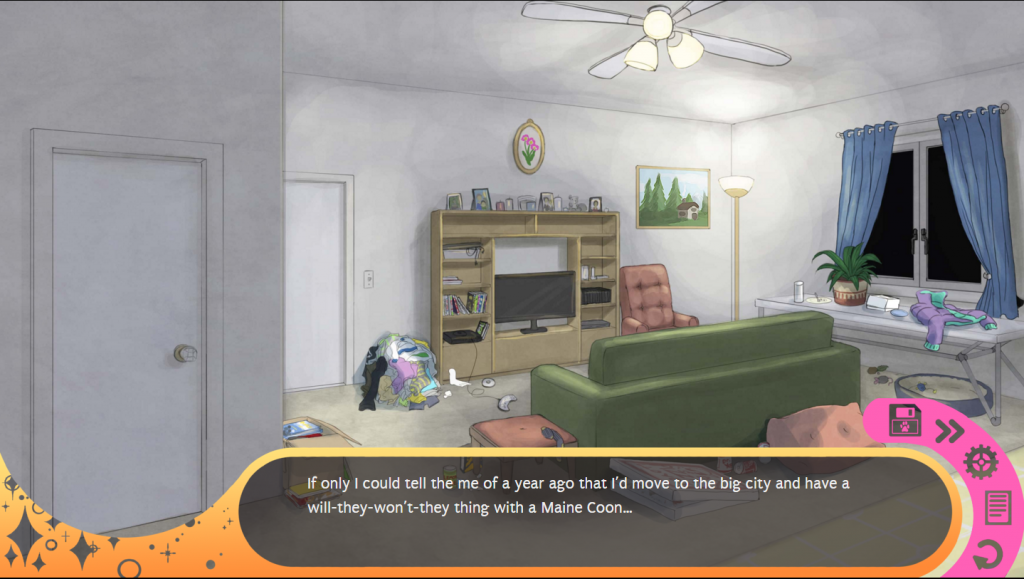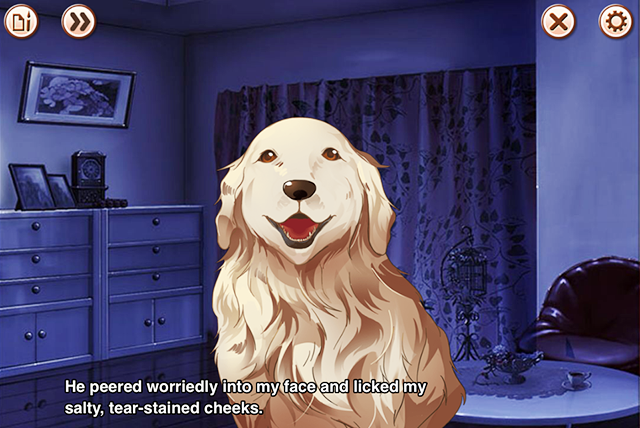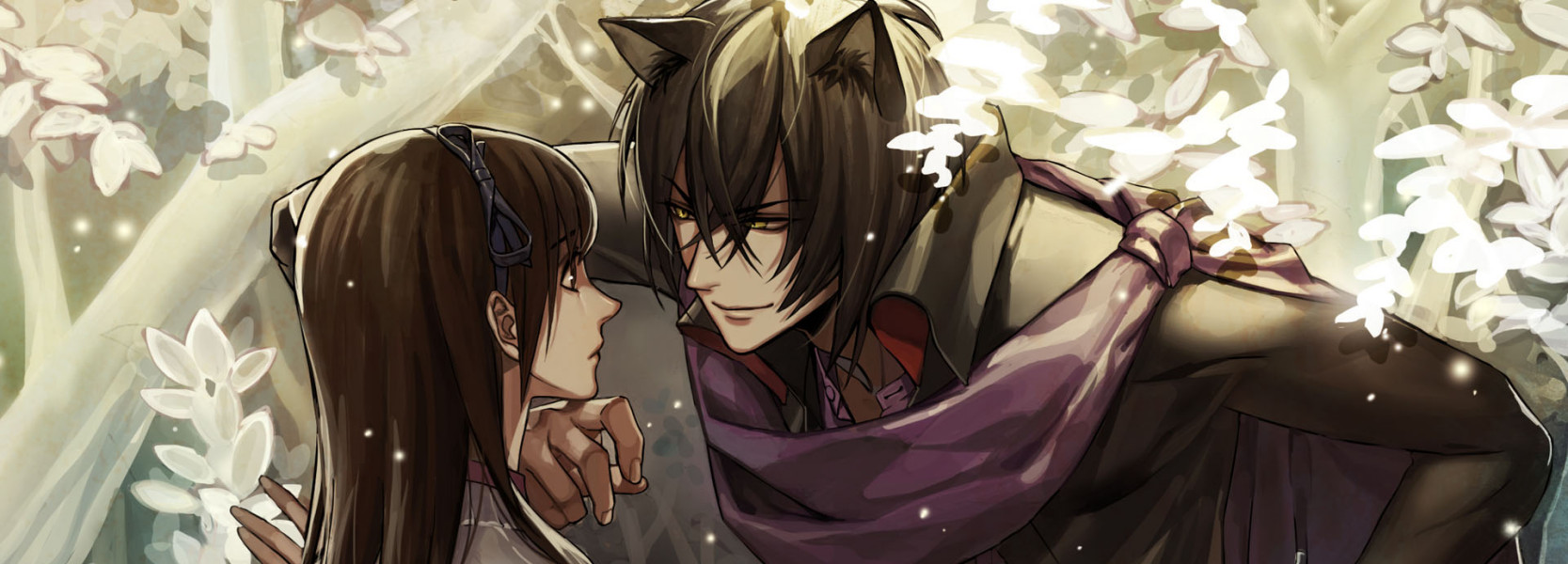It wasn’t until I was halfway through the Korean visual novel Dandelion – wishes brought to you – (2012), when I had already spent hours trying to get in the pants of a guy who had previously been a black cat, that I began to wonder if I was actually a Furry.
Jisoo, the object of my affection in Dandelion, is not anthropomorphic in the traditional sense; rather, he is either in black cat form or, when under the influence of magic, a human body. Even in his human form, however, he retains his black cat ears, his love of food and napping, and his hatred of water. His default, normal form thus appears to be his cat form, and yet, upon reaching the “good” ending and winning his love, he is transformed into a full human. At a moment when the celebratory ending music blasts and the player should feel fulfilled by their prize—seriously, the stats-raising system is hard—I felt deflated.
I missed his cat ears.
///
A trend has seemingly emerged in visual novels, both in Asia and North America, involving the use of animals as love interests. Visual novels are nothing new; they’ve been around since at least 1994. But visual novels featuring animal romances have seemingly only just begun to surface, with most cropping up in the past five years.
In these visual novels, the main character’s pets—either through magic or a dark curse of some kind—transform into humans, often retaining their animal personalities, memories, and traits. They can communicate and reason like humans, the visual novels usually explain, but their animal form, for obvious reasons, makes it difficult for the animals to connect to people—that’s where their human forms come in. These kinds of visual novels appear to be growing in popularity, filling a niche that apparently needed to be filled. We’re talking the Furry niche.
A Furry (a term coined back in 1980) is generally someone who shares some level of interest in or affinity for anthropomorphic characters. And no, that interest does not have to be sexual in nature; the Furry community has unfairly gotten a pretty bad reputation over the years, being painted as deviants in fursuits and ”proponents” of the infamous Rule 34. The stereotype is far from the truth: the sexuality of a Furry, like any other person, is a broad, broad spectrum ranging from the innocuous to the maybe not-so-innocuous.

Zootopia image via Vimeo.
Other forms of media have embraced the Furry theme, in all its subtle variances, far before visual novels. Sure, on one side of the spectrum is Space Jam’s (1997) Lola Bunny, whose exaggerated sexuality, uh, jump-started puberty for many of the movie’s young viewers, leading to things like a Facebook group dedicated to the “sexual tension between Michael Jordan and Lola Bunny.” But these sexualized, not-so-innocuous forms of Furrydom are seemingly few and far between.
Examples of the more prevalent innocent “Furryish” themes include Disney’s 1986 animated film The Great Mouse Detective, whose main character Basil’s dulcet voice and charm made his viewers (which may or may not include myself) forget he was a mouse. And it would be remiss to forget the weirdly hot fox Robin Hood from the eponymous 70s Disney film, one of the first big anthropomorphic animated films that continues to inspire animal-loving filmmakers. Such inspired films include the new Disney animated film Zootopia, whose production team has actively called on the Furry community to represent the world of Zootopia itself by appearing at movie viewings in full Furry costume—it’s one of the first public acknowledgements that Furries are a big percentage of anthropomorphic film consumers. But, in line with the movie’s theme of embracing diversity and inclusivity, it’s an unprecedented move that’s also an intelligent one.
Over in Japan, in Studio Ghibli’s movie, The Cat Returns (2002), the protagonist Haru admits to having a “little crush” on Baron, her savior throughout the narrative. Baron politely acknowledges her feelings, and ultimately, nothing comes out of her admission partially because Baron is a cat—a suit-wearing, British-accented talking cat, but a cat nonetheless. But by then, even the viewer has likely formed some level of admiration for the chivalric Baron. This potential romance between a human and an anthropomorphic cat did not deter viewers; there was no public push-back against the “weirdness” of a girl and a humanoid cat in love. Hell, The Cat Returns was the highest-grossing film in Japan when it was released.
However, visual novels present a much bigger issue in that they call upon their readers to actively engage in romance with an anthropomorphic character, as opposed to films whose viewers are just complicit, passive consumers. Visual novels with animal love interests force their audience to question their own sexuality, their potential affinity for anthropomorphism, and to inevitably bring up the larger question of what it means to be a human. So where does one draw the line between what is “human enough” to romance and what creeps into Furry territory?

To even come close to an answer, one needs to know what exactly constitutes anthropomorphism. If anthropomorphism is defined as applying human characteristics to a nonhuman entity, is an animal trapped in a human body “anthropomorphized”? At least in the case of Jisoo (my lovely black cat-man-boyfriend), arguably, he is anthropomorphic: at his very core, he is a cat that, for the near entirety of the game, is trapped in about 99 percent of a human body. His personality as a cat is not altered by physical form; his cat identity still exists, but has merely been given human bodily characteristics. When you romance Jisoo, you’re not romancing a human—you are, regardless of the form of his body, romancing a cat with some human traits. And that makes you sound like some degree of Furry.
In the case of Hustle Cat, a visual novel recently (and quickly) funded through Kickstarter, you date humans that are cursed and transform into cats whenever they leave the cat cafe, the setting for the game. Here, the romanceable characters are not necessarily anthropomorphic because, at their core, they are truly human. At the same time, the “romancing” scenes still occur regardless of what body the love interest is in. One scene includes the main character blushing upon carrying one of the love interests in cat form, as though carrying the love interest in cat form was a romantic act or a suggestive bodily intrusion.
Most visual novels featuring animals as love interests relatively follow the same narrative thread as Dandelion, differing only in the kinds of animals you can date. Forbidden Romance: My Secret Pets (2015) and Animal Boyfriend: Paws & Tails (2012) both also feature another main character whose pets transform overnight into an attractive reverse-harem of her own. Though human, the romanceable pets-turned-humans keep some of their animal characteristics, like rabbit ears or hooked noses purposefully resembling bird beaks. And if cats, rabbits, and birds are not exotic enough for your tastes, try playing Beastmaster and Prince -Flower & Snow-, produced by Idea Factory, developers of arguably one of the most famous visual novels of all, Hakuoki (2010). In Beastmaster, which takes place in an A Thousand and One Nights-type setting, you can romance a goddamn lion or a duck for some reason while simultaneously trying to break the curse that traps those love interests in animal bodies.
That the visual novel giant Idea Factory is jumping on the animal-romance train is significant, and signals the permeance of this particular romantic theme in visual novels. Even Hatoful Boyfriend (2011), a visual novel about dating eccentric talking pigeons, currently has a 9/10 user rating on Steam and a cult following that resulted in an HD remake, comics, and plush toys. With developers located as far-flung as North America, Japan, and South Korea creating visual novels featuring romanceable pets-turned-human, perhaps the Furrydom can no longer be treated as an underground culture defined by its unique fetish. Instead, perhaps the growth of these games signals the widespread normalization of the various degrees of Furriness.

The popularity of the theme makes sense. The romanceable pets-as-humans theme in visual novels is in line with recent studies which have shown that anthropomorphized characters more effectively trigger feelings of empathy than an entirely human character, allowing visual novel players to more quickly and naturally form an attachment to those characters. One study conducted back in 2007 tested the potential relationship between perceived human-likeness and levels of attraction toward a character, and concluded that “the safest combination for a character designer seems to be a clearly non human appearance with the ability to emote like a character.” Likely, the effectiveness of anthropomorphic characters to effectively facilitate feelings of love in players is what visual novel developers are capitalizing on: making attractive mostly-human characters, but adorned with adorable cat ears and a tail, which more likely guarantees the player’s love and money. And by giving the animal love interests the ability to fully transform into humans at some point in time, actively blurring the line between human and animal, visual novel developers are allowing their players to act upon their romantic attachment without either the visual novel being deemed to target Furries, or the player being labeled as “Furry.” After all, the word carries quite a stigma. Just ask Tony the Tiger.
Maybe we, as humans, anthropomorphize non-human beings as a reflection of our own arrogance because, in our minds, loveable beings must have human traits. But these visual novels suggest another reason for the popularity of animals as love interests in visual novels: the desire to connect to and actively engage with creatures beyond ourselves using our own agency and decision-making process, and without judgment from either other consumers or the love interests themselves.
We love to love animals. Pets make us happy, unconditionally; anthropomorphism allows humans to rationalize a pet’s or character’s actions and accept them as a social companion despite them being a nonhuman entity. The popularity of animals as love interests in visual novels likely means a growing consumer base, which also likely means a growing acceptance of and desire for this kind of narrative theme. By romancing these anthropomorphic characters, we are given the unconditional love of a pet, but with all the perks of dating a human.
